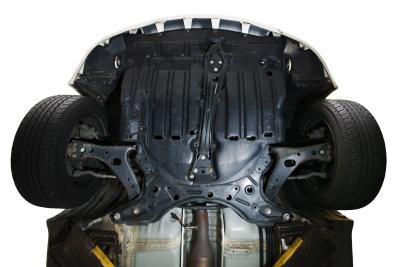
Any malfunctions that affect a vehicle's steering capabilities are cause for alarm, as the inability to maneuver around traffic or other obstacles might result in a collision. Precise control is fundamental to safe operation of a vehicle. Several factors may be responsible for steering that binds in one direction or another. Mechanical, hydraulic or electronic components could hinder correct function of a steering system. Component repair or replacement may restore proper steering, once other possibilities are eliminated.
Vehicles that are involved in a collision can incur steering component damage that may escape notice under light inspection. The slightest distortion of the chassis, or defective moving parts, can result in erratic handling characteristics. Exact geometry is key to wheel alignment and steering performance, and any chassis damage or worn parts could upset the precise motions required. A steering column shaft that is slightly bent can bind in the housing bearings under certain circumstances.
Gears set into motion by the steering wheel provide the force needed to change the direction of the front wheels. Whether they are rack and pinion or recirculating ball, gear conditions and adjustments must be correct. Rack and pinion internal components are not serviceable, and any discrepancies require replacement of the entire assembly. Recirculating ball-type gears may bind in one direction if bearings and sector shafts are worn beyond limits, or require adjustment.
Power steering fluid can become contaminated by a failed part that emits dislodged pieces into the hydraulic system. Replacement component warranties are voided if the system is not flushed before installation of new or re-manufactured parts. Any debris in the system can restrict or block flow through the intricate valves that direct the fluid pressure. Hydraulic pressures in steering systems can reach more than 1,500 pounds per square inch, and any blockage can restrict wheel movement severely.
Wheel movement may be obstructed by curbing or parking lot stops, but is soon remedied by vehicle travel. More complicated problems arise with the recent advances in steering systems. Some heavier late-model vehicles may be equipped with electronic devices meant to boost power assist at parking lot speeds. The intended function is to ease steering wheel movement while parking, but a malfunction in this circuitry may randomly produce steering hardness at normal travel speeds.